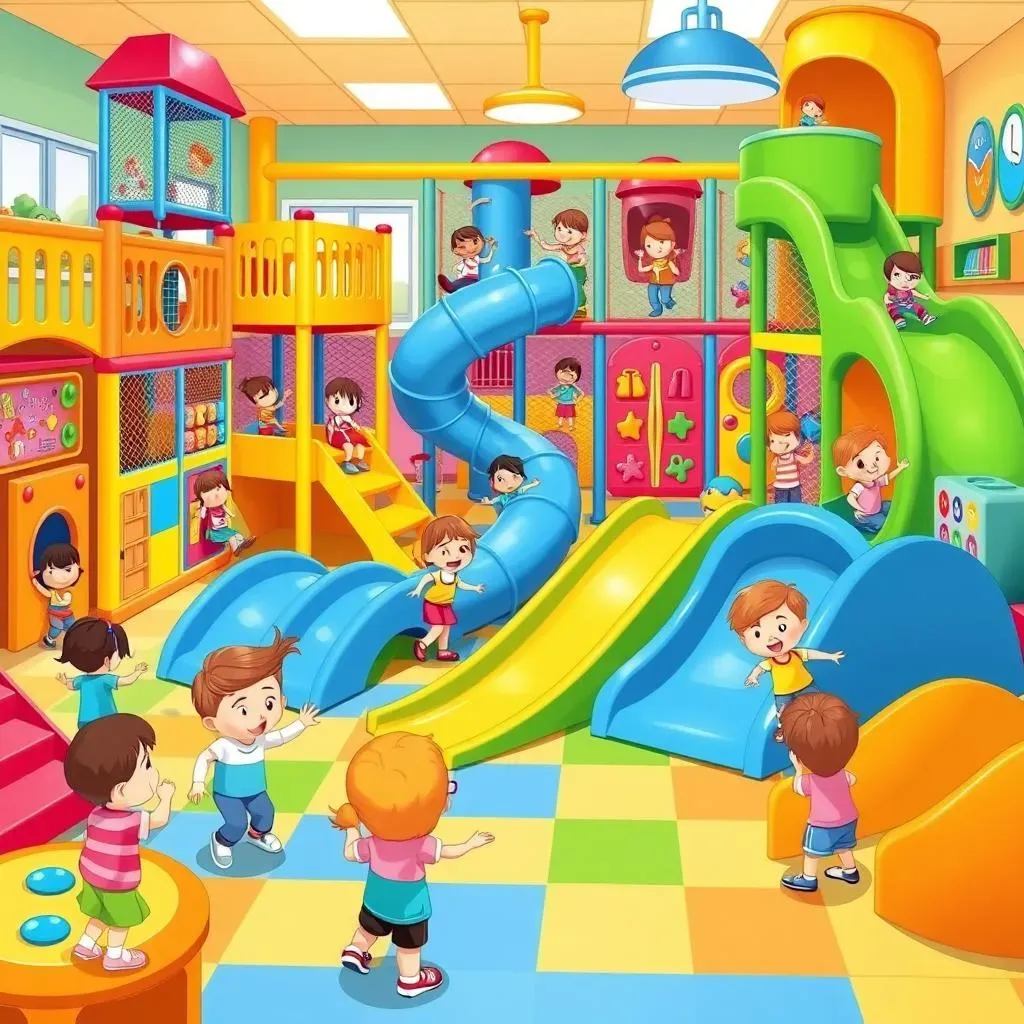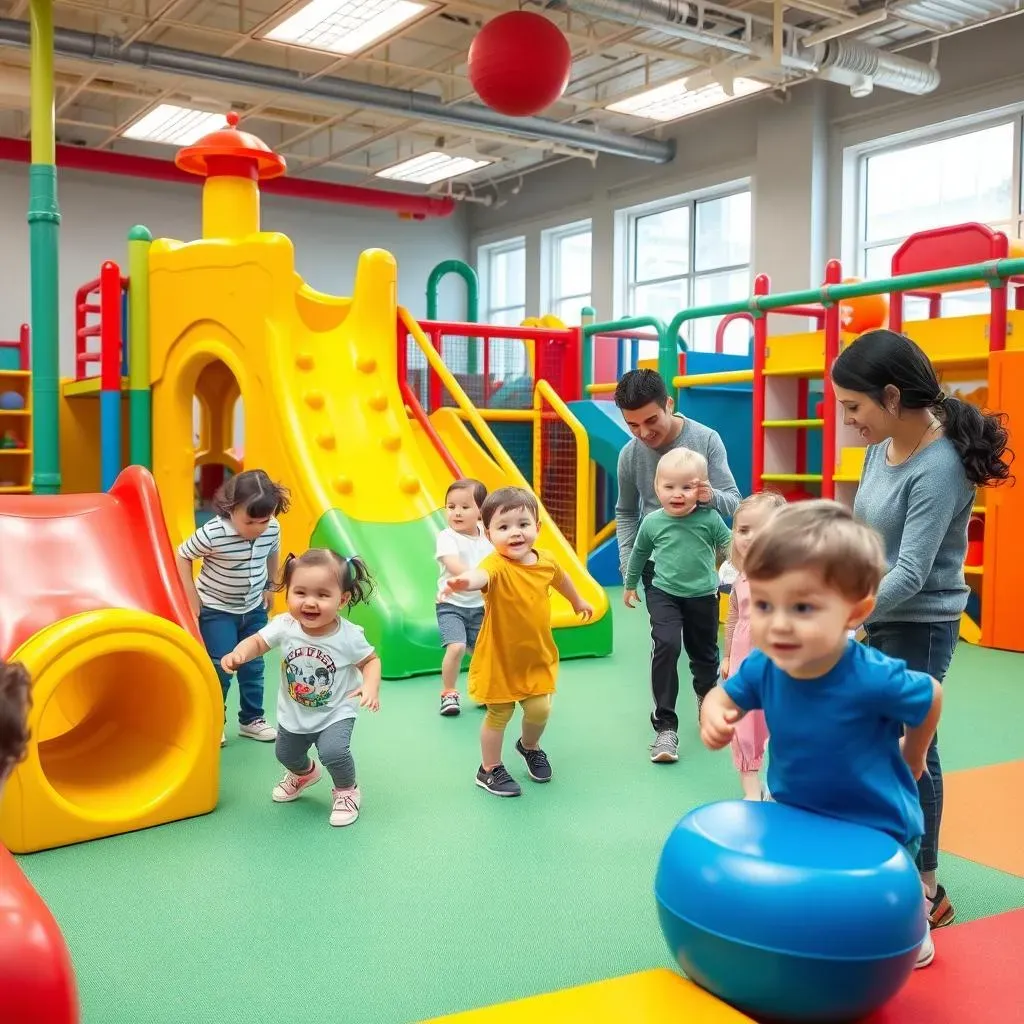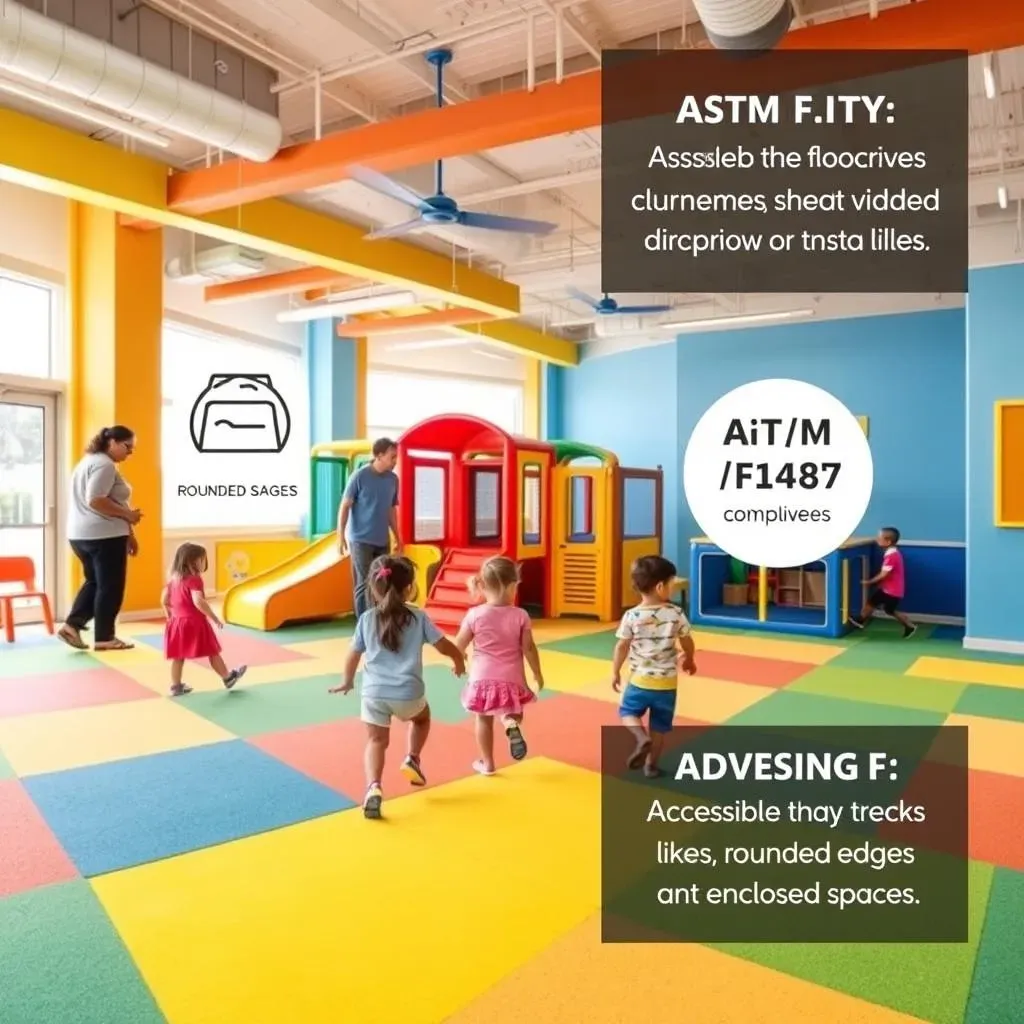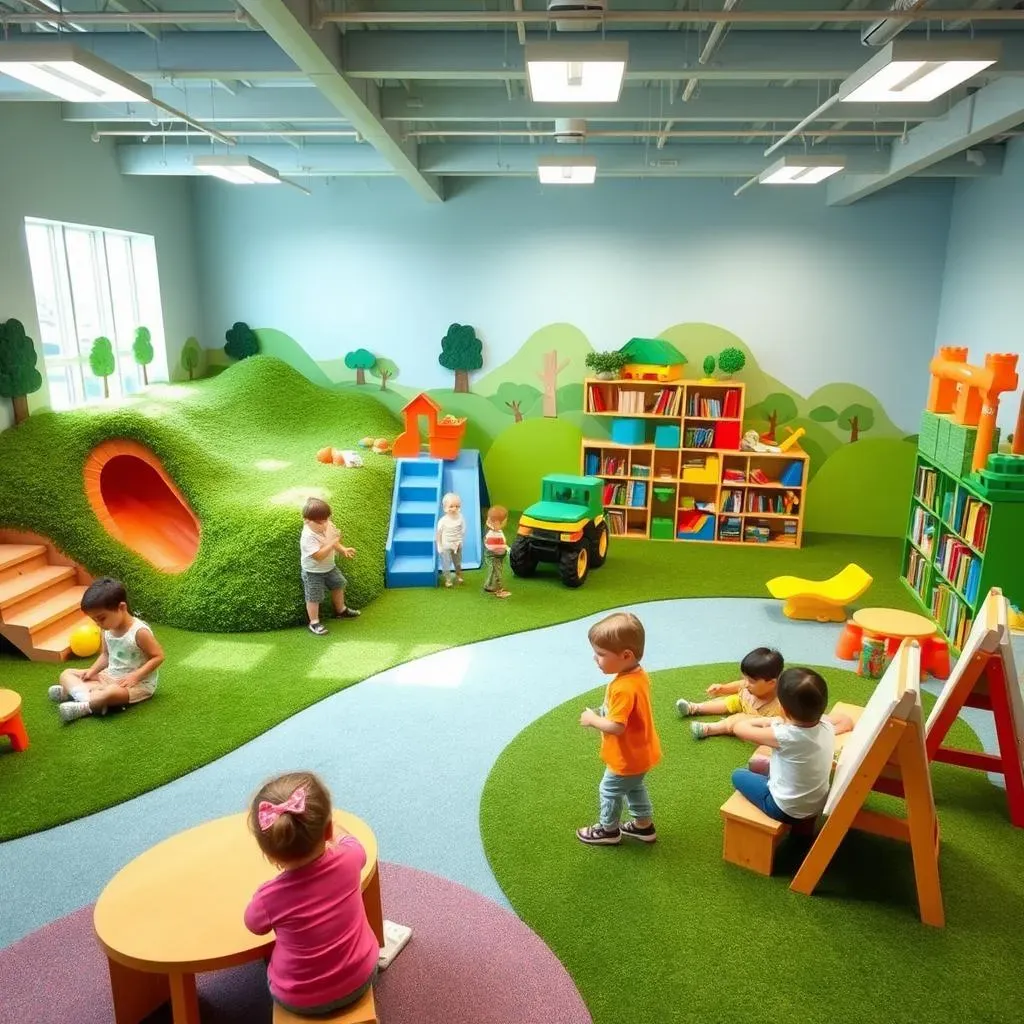Table of Contents
Rainy days or scorching summers don't have to mean the end of playtime for preschoolers! Indoor preschool playground equipment offers a fantastic solution for year-round active fun, right within the safety and comfort of your facility. But where do you start when choosing the right equipment, ensuring safety, and designing a space that sparks imagination? This guide will walk you through everything you need to know about creating an engaging and beneficial indoor playground for your preschool. We'll explore the numerous advantages of indoor play, from promoting physical activity and social interaction to fostering creativity and problem-solving skills. You'll learn how to select age-appropriate equipment that meets stringent safety standards, and discover design strategies to maximize space and create a stimulating environment. Whether you're setting up a brand-new play area or upgrading an existing one, get ready to unlock the potential of indoor preschool playground equipment and provide children with a safe, fun, and enriching play experience, no matter the weather outside. Let's jump in and build some fun!
Benefits of Indoor Preschool Playground Equipment

Benefits of Indoor Preschool Playground Equipment
Year-Round Fun and Fitness
Let's be honest, unpredictable weather can throw a wrench in any preschool's outdoor playtime plans. But with indoor playground equipment, the fun never has to stop! These spaces provide a climate-controlled environment where kids can run, jump, and climb, regardless of rain, snow, or scorching heat. It's a fantastic way to ensure they get their daily dose of physical activity, which is crucial for their overall health and development. Think about it: no more stir-crazy kids cooped up inside all day! They can burn off energy, develop gross motor skills, and stay active, all while having a blast.
Beyond just burning energy, indoor playgrounds offer a structured environment for physical development. Many setups incorporate elements that encourage specific movements, like climbing walls for upper body strength or tunnels for crawling and coordination. This targeted approach can be particularly beneficial for preschoolers who may need extra support in developing certain motor skills. Plus, the sheer variety of activities available in an indoor playground keeps things exciting and engaging, motivating kids to stay active for longer periods.
Benefit | Description |
|---|---|
Year-Round Play | Provides a consistent play environment regardless of weather conditions. |
Physical Activity | Encourages running, jumping, climbing, and other forms of exercise. |
Motor Skill Development | Helps children develop gross motor skills, coordination, and balance. |
Social and Cognitive Development
Indoor playgrounds aren't just about physical activity; they're also fantastic hubs for social interaction and cognitive development. These spaces provide opportunities for children to interact with their peers, learn to share, take turns, and cooperate in a fun and engaging setting. Imagine the giggles and collaborative problem-solving as they navigate a multi-level play structure together! These shared experiences help build essential social skills that will benefit them throughout their lives.
Furthermore, indoor playground equipment can be designed to stimulate cognitive skills. Many structures incorporate puzzles, mazes, and other interactive elements that challenge children to think critically and creatively. For example, a climbing structure might require kids to plan their route and problem-solve to reach the top. These types of activities help develop spatial reasoning, problem-solving skills, and critical thinking abilities, all while they're having a blast. It's learning through play at its finest!
Choosing the Right Indoor Playground Equipment for Preschoolers

Choosing the Right Indoor Playground Equipment for Preschoolers
Age-Appropriateness is Key
so you're ready to dive into the world of indoor playgrounds! That's awesome! But before you get swept away by all the colorful equipment, let's talk about age-appropriateness. What's perfect for a 4-year-old might be way too challenging (or even dangerous) for a 2-year-old. Think about the developmental stages of the children you're catering to. Are they just starting to explore climbing, or are they already mini-daredevils? Choose equipment that matches their abilities and encourages them to grow without pushing them beyond their limits. For example, toddlers might benefit from soft play areas with gentle slopes and tunnels, while older preschoolers might enjoy more complex climbing structures and slides.
Also, consider the size and scale of the equipment. Everything should be appropriately sized for little bodies, with easy-to-reach handholds and footholds. Avoid anything that's too tall or requires excessive strength to navigate. Remember, the goal is to create a fun and empowering experience, not a frustrating one! When in doubt, always err on the side of caution and choose equipment that's designed specifically for the age group you're serving. It's an investment in their safety and enjoyment!
Prioritizing Safety First
Alright, safety is non-negotiable when it comes to indoor playground equipment. Seriously, this is the most important thing to consider! Always, always, always check that the equipment meets or exceeds all relevant safety standards. Look for certifications like ASTM or IPEMA, which indicate that the equipment has been rigorously tested and meets specific safety requirements. Don't be afraid to ask manufacturers for documentation and proof of compliance. Your little ones' well-being depends on it!
Beyond certifications, take a close look at the materials and construction of the equipment. Are there any sharp edges, exposed hardware, or potential pinch points? Is the padding thick and durable enough to cushion falls? Pay attention to the details! Regular inspections are also crucial. Establish a routine for checking the equipment for wear and tear, loose connections, and any other potential hazards. Address any issues immediately to prevent accidents. And don't forget about proper supervision! Make sure there are always trained adults present to monitor the children and ensure they're using the equipment safely.
Safety Checklist | Description |
|---|---|
Certifications | Verify ASTM or IPEMA certifications. |
Materials | Inspect for sharp edges, pinch points, and durable padding. |
Regular Inspections | Establish a routine for checking equipment condition. |
Supervision | Ensure trained adults are always present. |
Durability and Maintenance
Let's face it, preschoolers can be tough on equipment! That's why durability is a key factor to consider when choosing indoor playground structures. You want equipment that can withstand years of enthusiastic play without falling apart. Look for materials that are known for their strength and resilience, such as heavy-duty plastics, reinforced steel, and high-quality fabrics. Ask manufacturers about the expected lifespan of their products and what kind of warranty they offer. A good warranty is a sign that the manufacturer stands behind their product and is confident in its durability.
Maintenance is another important aspect to think about. How easy is the equipment to clean and maintain? Choose materials that are easy to wipe down and disinfect, as hygiene is crucial in a preschool setting. Also, consider whether any parts will need to be replaced over time. Are replacement parts readily available and affordable? By considering durability and maintenance upfront, you can ensure that your indoor playground equipment will provide years of safe and enjoyable play for your preschoolers.
Safety Standards for Indoor Preschool Playgrounds

Safety Standards for Indoor Preschool Playgrounds
Navigating the Regulatory Landscape
let's talk about the not-so-thrilling but super important part: safety regulations! Indoor playgrounds for preschoolers aren't just about fun and games; they're also subject to a whole bunch of rules and guidelines designed to keep kids safe. Understanding these safety standards for indoor preschool playgrounds is crucial for creating a secure and compliant play environment. In the US, the primary standard is ASTM F1487, which covers safety requirements for playground equipment in public use. This standard addresses everything from fall heights and impact attenuation to entrapment hazards and accessibility. Make sure you're familiar with the latest version of this standard and that all your equipment complies with its requirements.
It's also important to check for any state or local regulations that may apply to indoor playgrounds. Some states have their own specific requirements that go above and beyond the federal standards. Your local health department or building inspector can provide you with information on these regulations. Staying up-to-date on all applicable safety standards is an ongoing process. Regulations can change over time, so it's important to regularly review the latest guidelines and make any necessary adjustments to your playground. Think of it as an investment in the safety and well-being of your little ones!
- ASTM F1487: The primary US safety standard for playground equipment.
- State and Local Regulations: Check for any additional requirements in your area.
- Regular Updates: Stay informed about changes to safety standards.
Impact Attenuation and Fall Zones
One of the most critical aspects of playground safety is impact attenuation, which refers to the ability of the playground surface to cushion falls and reduce the risk of injuries. The safety standards for indoor preschool playgrounds specify minimum requirements for the depth and type of surfacing materials used in fall zones, which are the areas around playground equipment where a child is likely to fall. Common surfacing materials include rubber mulch, engineered wood fiber, and poured-in-place rubber. Each material has its own advantages and disadvantages in terms of cost, durability, and maintenance requirements. When choosing a surfacing material, make sure it meets the impact attenuation requirements specified in ASTM F1487 for the fall height of the equipment.
Fall height is the vertical distance between the highest designated play surface on the equipment and the protective surfacing below. The higher the fall height, the greater the impact attenuation required. It's also important to ensure that the fall zone extends far enough around the equipment. The minimum fall zone dimensions are specified in ASTM F1487 and vary depending on the type and height of the equipment. Regular inspections of the surfacing material are essential to ensure that it remains in good condition and provides adequate impact attenuation. Replace or replenish the surfacing material as needed to maintain the required depth.
Entrapment Hazards and Accessibility
Entrapment hazards are another serious concern in indoor playgrounds. These are any openings or spaces in the equipment where a child's head, neck, or limbs could become trapped. Safety standards for indoor preschool playgrounds require that all playground equipment be designed to minimize the risk of entrapment. This includes ensuring that openings are either too small or too large to allow a child's body part to become lodged. Regular inspections of the equipment are crucial to identify and address any potential entrapment hazards. Pay close attention to openings in slides, climbers, and other play structures.
Accessibility is also an important consideration, particularly for children with disabilities. The Americans with Disabilities Act (ADA) requires that playgrounds be accessible to children of all abilities. This includes providing accessible routes to and from the playground, as well as accessible play equipment that can be used by children with mobility impairments. When designing or selecting indoor playground equipment, consider the needs of all children and ensure that the playground is inclusive and accessible to everyone.
Safety Element | Description |
|---|---|
Entrapment | Ensure no openings can trap a child's head or limbs. |
Accessibility | Comply with ADA guidelines for inclusive play. |
Designing Engaging Indoor Preschool Play Areas

Designing Engaging Indoor Preschool Play Areas
Creating Themed Zones
Alright, let's get creative! When designing engaging indoor preschool play areas, think beyond just throwing a bunch of equipment into a room. Consider creating themed zones that spark imagination and encourage different types of play. For example, you could have a "Nature Zone" with soft climbing structures, artificial grass, and nature-themed decorations. Or how about a "Construction Zone" with oversized building blocks, toy trucks, and construction-themed props? The possibilities are endless! Themed zones not only make the play area more visually appealing, but they also provide children with a sense of purpose and direction, encouraging them to engage in specific types of play and develop their interests.
When planning your themed zones, think about the different developmental needs of preschoolers. Include zones that promote physical activity, social interaction, and cognitive stimulation. A "Quiet Zone" with books, puzzles, and soft seating can provide a calming space for children who need a break from the more active areas. A "Creative Zone" with art supplies, musical instruments, and dress-up clothes can encourage self-expression and imagination. By carefully considering the different needs and interests of preschoolers, you can create a play area that is both engaging and beneficial for all children.
Zone Type | Description | Example Elements |
|---|---|---|
Nature Zone | Encourages exploration of the natural world. | Artificial grass, soft climbing structures, nature-themed decorations. |
Construction Zone | Promotes building and problem-solving skills. | Oversized building blocks, toy trucks, construction-themed props. |
Quiet Zone | Provides a calming space for relaxation and quiet activities. | Books, puzzles, soft seating, calming colors. |
Creative Zone | Encourages self-expression and imagination. | Art supplies, musical instruments, dress-up clothes, puppets. |
Maximizing Space and Flow
Space is often a premium in preschools, so it's crucial to maximize every square inch when designing engaging indoor preschool play areas. Think about the flow of the play area and how children will move from one zone to another. Avoid creating bottlenecks or dead ends that can lead to congestion and frustration. Use pathways and visual cues to guide children through the play area and encourage them to explore different zones. Consider using vertical space to your advantage by incorporating climbing structures or wall-mounted activities.
Also, think about the arrangement of the equipment. Group similar activities together to create cohesive zones and avoid mixing activities that might conflict with each other. For example, keep the active play zone separate from the quiet zone to minimize distractions. Use furniture and dividers to create clear boundaries between zones and define different areas of the play space. By carefully planning the layout of the play area, you can create a space that is both functional and engaging, maximizing the use of available space and promoting a smooth and enjoyable play experience for all children.
Conclusion: Creating a World of Play Indoors
Investing in indoor preschool playground equipment is more than just buying some slides and tunnels; it's about creating a dynamic environment where children can learn, grow, and thrive, regardless of the weather. By carefully considering the benefits, selecting the right equipment, prioritizing safety, and designing engaging play areas, you can transform your preschool into a haven of active learning and imaginative play. So, take the plunge, explore the possibilities, and build an indoor playground that will spark joy and inspire young minds for years to come. After all, play is the serious work of childhood!